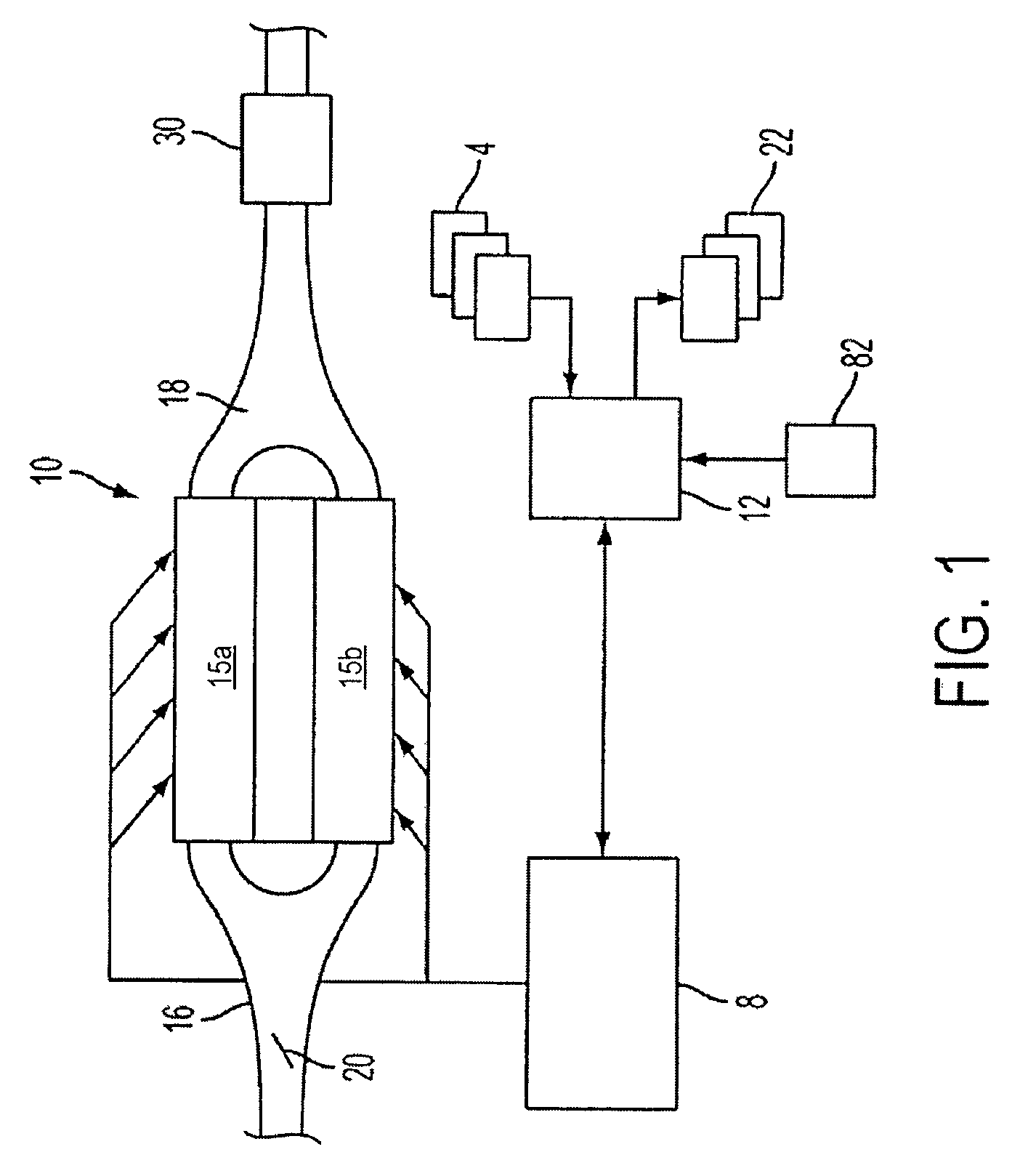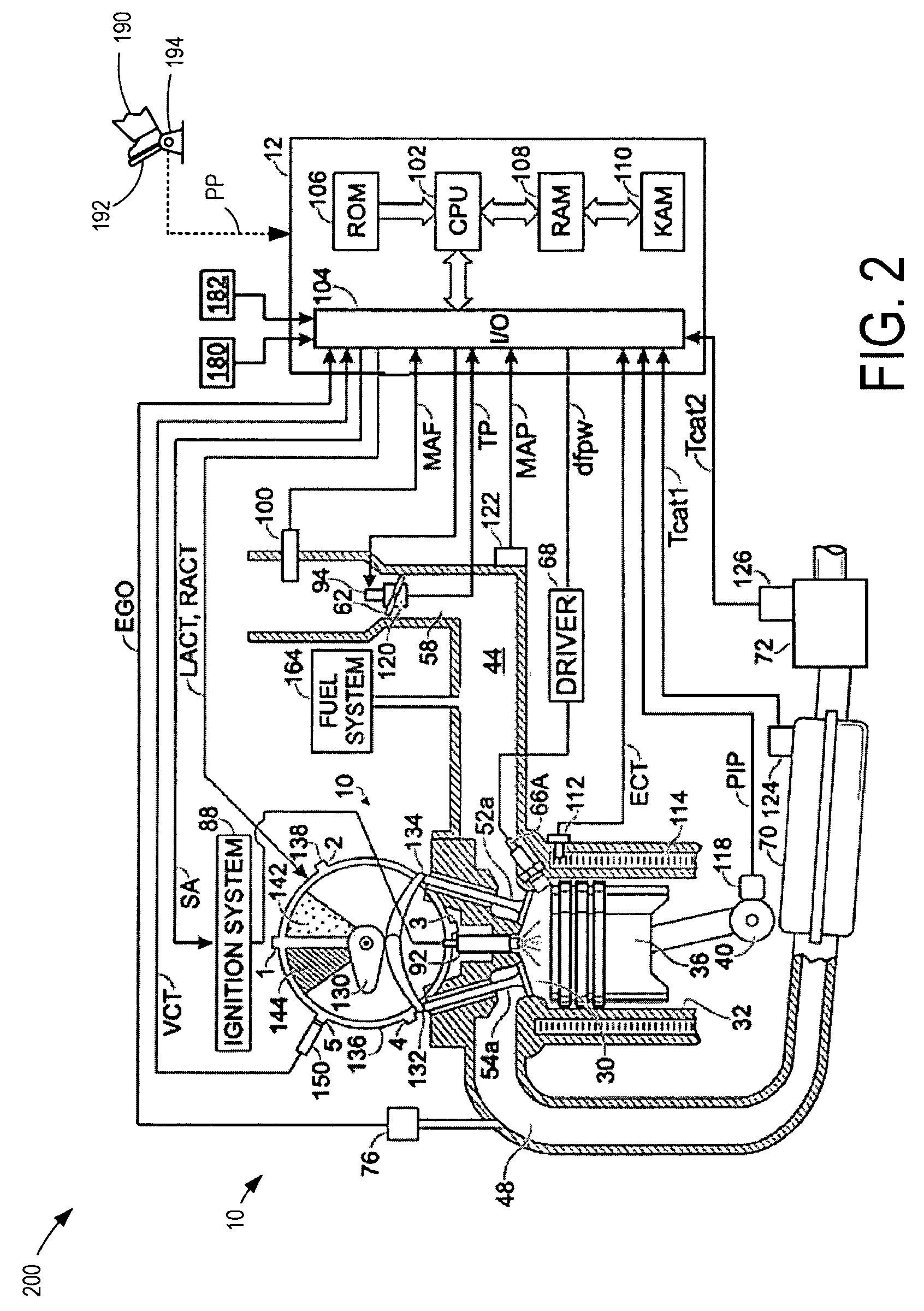Coordination of variable cam timing and variable displacement engine systems
a technology of variable cam timing and variable displacement, which is applied in the direction of electrical control, non-mechanical valves, instruments, etc., can solve the problems of variable cam timing, engine misfire potential, and per-cylinder load may drop to a level, so as to improve fuel economy and emissions performance of the vehicle, and increase fuel economy
- Summary
- Abstract
- Description
- Claims
- Application Information
AI Technical Summary
Benefits of technology
Problems solved by technology
Method used
Image
Examples
Embodiment Construction
[0013]The following description relates to systems and methods for coordinating variable displacement operation and variable cam timing in a variable displacement engine (VDE), in particular during transition between VDE and non-VDE modes of operation. As such, the variable displacement engine (such as the one illustrated in FIGS. 1-2) can switch between operation with all cylinders firing or half the cylinders firing by changing the operation of the intake and exhaust valves of selected cylinders. As shown in FIG. 3, an engine control system may be configured to adjust a cam timing (such as, an amount of cam retard) during and after a transition to provide the driver-demanded torque. The cam timing may be adjusted within a range based on, for example, combustion stability valve timing limits. The combustion stability limit may, in turn, be based on various engine output affecting parameters, such as those related to the generation of cylinder residuals, including, but not limited t...
PUM
 Login to View More
Login to View More Abstract
Description
Claims
Application Information
 Login to View More
Login to View More - R&D Engineer
- R&D Manager
- IP Professional
- Industry Leading Data Capabilities
- Powerful AI technology
- Patent DNA Extraction
Browse by: Latest US Patents, China's latest patents, Technical Efficacy Thesaurus, Application Domain, Technology Topic, Popular Technical Reports.
© 2024 PatSnap. All rights reserved.Legal|Privacy policy|Modern Slavery Act Transparency Statement|Sitemap|About US| Contact US: help@patsnap.com










